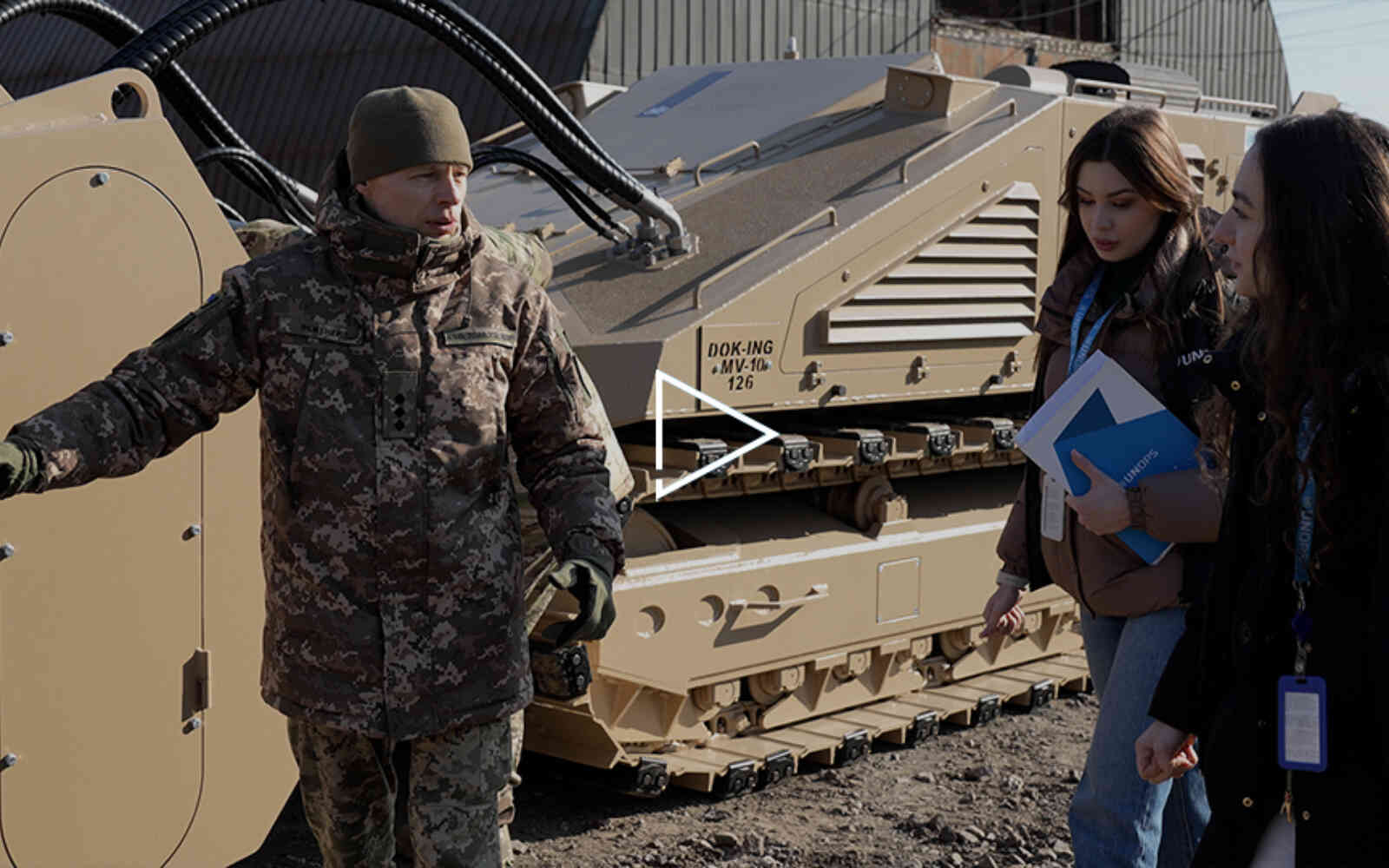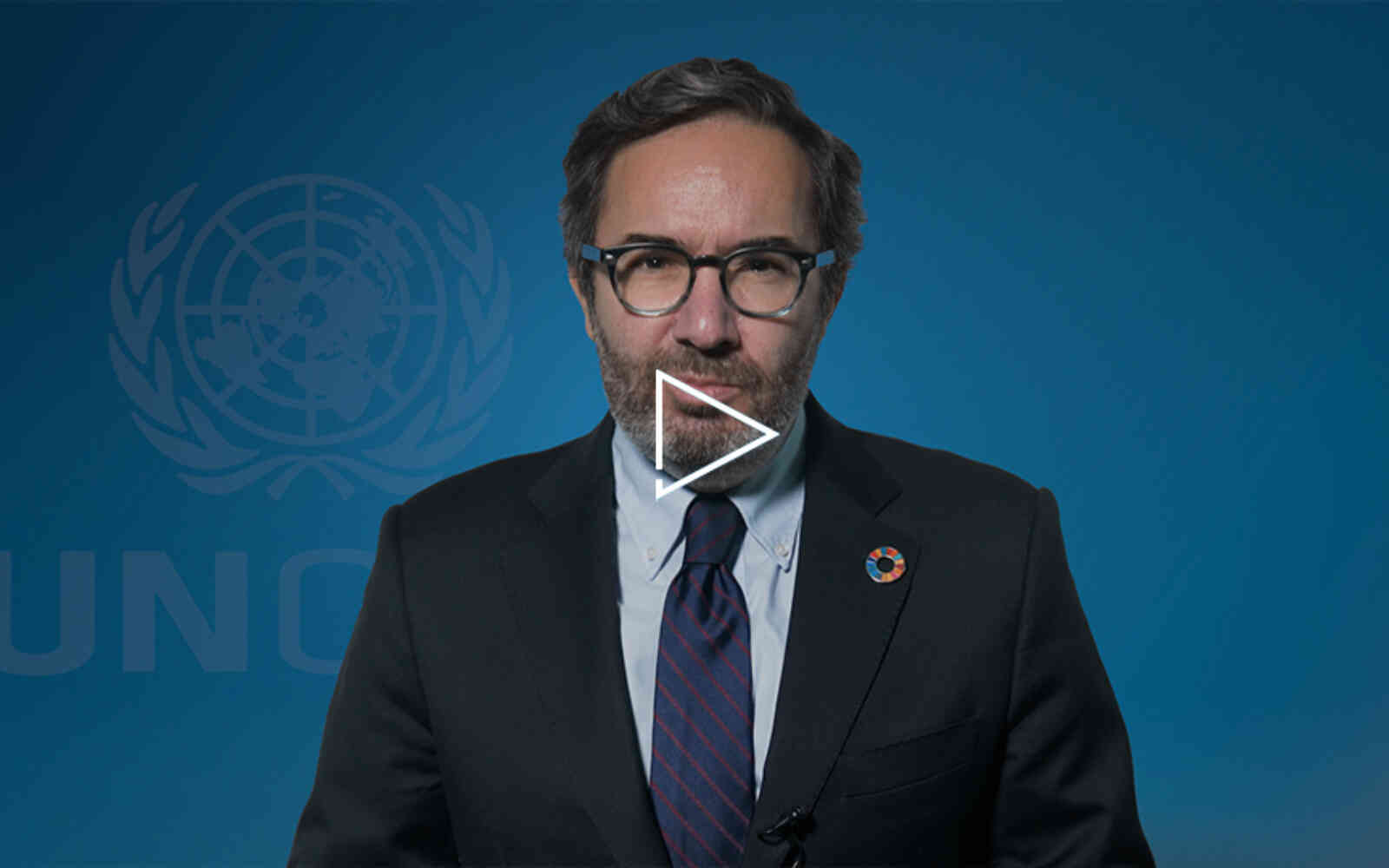The United Nations Office for Project Services (UNOPS)

PRODERE: Reflections on a revolutionary approach to development
Throughout 2015, we have been exploring some of our past achievements. This includes PRODERE, which helped to reintegrate those affected by decades of civil war in Central America.
This year marked the 28th anniversary of the Esquipulas II Peace Agreement. The agreement signified a common effort among Central American leaders to end military conflicts that had plagued the region for decades, producing millions of refugees, internally displaced persons and other war affected populations in Belize, Costa Rica, El Salvador, Guatemala, Honduras and Nicaragua.
The agreement promoted national reconciliation, democratization, free elections and assistance to refugees and IDPs. It was one of the most important agreements ever signed in Central America and earned its negotiator, Óscar Arias, the Nobel Peace Prize in 1987.
One of the main issues that needed to be addressed to resolve this regional crisis was the massive displacement of people all over the region. To address this, the UN launched a special plan of action in support of the Esquipulas II agreement.


A UN inter-agency initiative
Following the signing of Esquipulas II, Italy provided a $115 million donation to support the immediate priorities of the UN Plan of Action: Refugees; internally displaced people; and economic rehabilitation. There were, however, a few stipulations that came with this generous donation: It would be regional in nature; implemented by the UN System in all six countries and at regional level; and no one UN organization could work alone, they had to work together to achieve success.
The six Central American countries, together with the Italian Government, and the United Nations Development Programme (UNDP), signed a letter of intent to install a regional peacebuilding and development programme: The Development Programme for Displaced Persons, Refugees and Returnees in Central America (PRODERE), which ran from 1989 to 1995.
The main objective of the Programme was to contribute to the peace process in Central America, by providing assistance to affected populations in order to enable them to successfully resettle in their places of origin and by providing development support to the communities in which they lived.
There were various revolutionary aspects about the programme
"There were various revolutionary aspects about the programme," explained Christophe Bouvier, then-Portfolio Manager of PRODERE. "It was a true act of international solidarity and generosity, particularly because the donor decided not to implement the programme bilaterally, but through the United Nations."
PRODERE was largely funded by the Italian Ministry of Foreign Affairs. UNDP acted as the co-financing partner of the Programme and its "Office for Project Services" ‒ which became UNOPS in 1994 ‒ was charged with PRODERE's overall implementation, in collaboration with other UN entities.
Several components were implemented with the participation of other UN agencies, including the World Health Organization (WHO), the International Labour Organization (ILO) and the United Nations High Commissioner for Refugees (UNHCR).
NGOs and other UN organizations, such as the World Food Programme and the United Nations Children's Fund, as well as the Inter-American Institute for Human Rights, would also join PRODERE. [1]
Thus began what is considered one of the most relevant UN inter-agency initiatives.
A REVOLUTIONARY APPROACH
PRODERE focused on providing both basic needs and socio-economic integration to war-affected populations. It targeted regions and areas that were hard hit by violent conflict, as was the case in Guatemala, El Salvador and Nicaragua, as well as those that hosted a large number of refugees, such as in Belize, Costa Rica and Honduras. [2]
"PRODERE was also revolutionary in that it provided international relief efforts for internally displaced persons," continued Christophe Bouvier.
"Many of the people in Central America were displaced violently, fleeing for their lives, but within the boundaries of their country. In those days, internally displaced persons were considered a sovereign issue for the country – but the Esquipulas II agreement opened the door to a broader type of support.
"Since then, that has changed. But back then, it wasn't obvious that the UN or any other international organization actually had a role other than shaming governments for not doing their jobs and protecting their own citizens."
PRODERE had five main objectives: To promote human rights; build consensus around local human development issues; spearhead the reintegration of returnees; restore basic services in areas such as health, education and housing; and reactivate the local economy. The work carried out was based on a non-discriminatory and territorial-based approach.
This bottom-up approach to development was different from traditional technical cooperation programmes; its inclusive nature brought together all members of the population – both those who had been displaced and not – around the common goal of a better future.
The programme sought to improve living conditions through income- and employment-generating activities. It used a participatory-action methodology, which allowed communities to take charge of their own future instead of being passive recipients.
Following years of conflict, there remained a considerable degree of mistrust between groups. In order for PRODERE to gain acceptance in these communities, programme activities needed to show concrete results, often concentrating on restoring basic services and infrastructure at the start. [3]
Mr. Bouvier explained: "The reinsertion of refugee populations was hugely problematic, both from an economic and a political standpoint. While the refugees had rights and were singled out as the object for international support, the populations around them that suffered in place during all those years hadn't had the same international support. For example, many people were very vulnerable because they had no official identification; PRODERE worked in several cases to facilitate individuals' documentation as a prerequisite for human rights protection, and access to development.
"This is why the non-discriminatory and territorial based approach worked so well; we were able to use this funding and support for the purposes of developing whole communities and therefore facilitate the reinsertion of people who had been affected by the conflict. We also supported those communities who were receiving this additional influx of population, as well as those who had been hosting refugees to ensure that they were sustained after the refugees returned home."
PRODERE's Impact
The programme is said to have benefited approximately 700,000 people throughout six countries. Projects were mainly active in El Salvador, Guatemala and Nicaragua, but activities were also undertaken in areas where asylum seekers had fled to throughout Costa Rica, Belize and Honduras.
In addition to the physical traces of PRODERE we can see today, the programme is mostly remembered for making possible a new participative space, where the people and communities involved in the projects were provided with opportunities to make choices.
Maria-Noel Vaeza, former Regional Director at UNOPS, who worked as an Advisor at UNDP in Guatemala at the time, explained: "PRODERE created Local Economic Development Agencies (LEDAs). These are local centres that provide information on crops, prices, new regulations and subsidies. They created dozens of them; it was a place of social gathering too. But it was mainly an area to get lessons learned and best practices from the community and to reconsolidate – this was the most important thing for the society after 40 years of war."
LEDAs, for example, were promoted by the ILO and aimed to create jobs through the promotion of economic initiatives by the local population, through the creation of small enterprises or cooperatives.
WHO helped install local health systems, and where projects focused on returnees or refugees, UNHCR facilitated quick impact projects.
It was amazing to see how forgiveness was evolving, via opportunities for the future
"It was amazing to see how forgiveness was evolving, via opportunities for the future … This was the kind of things that PRODERE was doing – making sure that there was reconciliation of the society and communities, but at the same time looking to the future to do that."
The programme's independent evaluation was chaired by the Arias Foundation for Peace and Human Progress and conducted by his Foundation and the Organization for Economic Cooperation and Development/Development Assistance Committee. The evaluation came back so positive that people at first felt it had no credibility. Mr. Bouvier remembers one thing Óscar Arias wrote: "Even if you put aside all the development work, if it was only for the human-rights dimension that alone would have been worth the investment."


Beyond PRODERE
The methodology and mind set of PRODERE has become a model for international engagement in various countries, including Albania, Angola, Bosnia-Herzegovina, Cambodia, Croatia, Haiti, Mozambique, Serbia, Somalia, Tajikistan and the Ukraine (Crimea).
"One thing that makes PRODERE exceptional," said Mr. Bouvier, "is if you talk to beneficiaries today, they cannot only remember PRODERE, but can still see the fruits of it today."
1. Dennis Dijkzeul, 'UNOPS in Guatemala: From Relief to Development', Thesis, New York University, 2000, 9.
2. Alfredo Lazarte, Hans Hofmeijer and Maria Zwanenburg. 'Local Economic Development in Central America: The PRODERE Experience', ILO, 1999, 6.
3. Alfredo Lazarte, Hans Hofmeijer and Maria Zwanenburg. 'Local Economic Development in Central America: The PRODERE Experience', ILO, 1999, 8.
Captions
- Top: (L) PRODERE sought to improve living conditions through income- and employment-generating activities © Romano Martinis. (R) Coffee farmer, Francisco Matom Bernal, was part of a collective of farmers who were resettled near Nebaj in Guatemala’s Western Highlands after the war ended © Santiago Billy for The Pulitzer Center
- Above: PRODERE used a participatory-action methodology, which allowed communities to take charge of their own future © Romano Martinis













